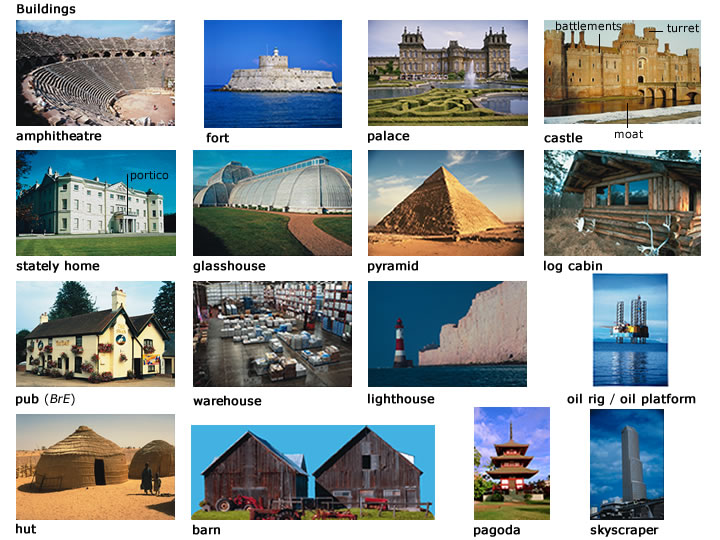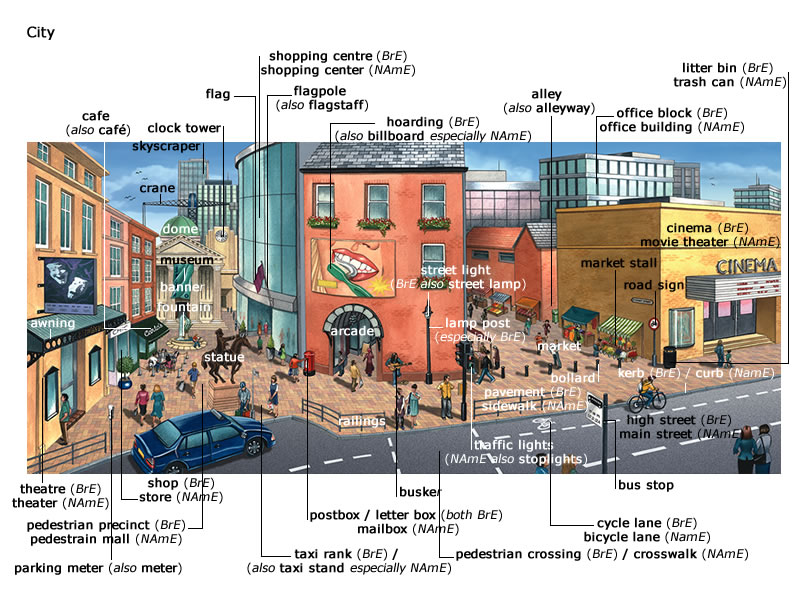|
Từ điển Oxford Advanced Learner 8th
 skyscraper
skyscraper

sky·scraper [skyscraper skyscrapers] BrE [ˈskaɪskreɪpə(r)] NAmE [ˈskaɪskreɪpər] noun 
a very tall building in a city 
Culture:
skyscrapers
Skyscrapers are very tall buildings that contain offices or places to live. The first were built in ↑Chicago in the late 1880s but they have since been copied all over the world. After 1913 the top few storeys of skyscrapers were often stepped back (= built gradually narrower, floor by floor) to allow more light to reach street level.
Many of the most famous skyscrapers are in New York City. The ↑Chrysler Building, at 1 047 feet/319 metres, was by far the tallest building in the world in 1930 when it was built. The taller ↑Empire State Building, 1 250 feet/381 metres high, was finished the following year. The towers of the ↑World Trade Center, built in the early 1970s, were about 1 350 feet/412 metres tall. Many visitors to New York took the ferry to ↑Staten Island so that they could see the Manhattan skyline, the outline of all the tallest buildings in New York.
The ↑Sears Tower in Chicago, built shortly after the World Trade Center, is said to be 1 454 feet/443 metres high and is currently the tallest building in the US. The Petronas Towers, built in 1996 in Malaysia, are about 1 483 feet/452 metres tall, though some people in Chicago disagree with the way they were measured and say that the Sears Tower is really taller. But in 2004 the Taipei 101 Tower in Taiwan became the world’s tallest building at 1 660 feet/507 metres high.
By comparison with skyscrapers in the US, those in Britain are rather small. ↑Canary Wharf, an office building in London’s ↑Docklands, stands only 800 feet/244 metres high but it replaced Tower 42, also in London, as Britain’s tallest building in 1986. Other skyscrapers in the City of London include the Lloyds Building, designed by Richard Rogers.
Skyscrapers which contain people’s homes are, in Britain, usually called high-rises or tower blocks. They became a common feature of British cities when hundreds of them were built to replace slums in the 1950s and 1960s. Many are 20 or 30 storeys high, and have several flats on each floor. The tallest residential block in Britain is the Shakespeare Tower, part of the Barbican complex in London, which is 419 feet/128 metres high. At first, high-rises were welcomed because they provided cheap, modern housing but later they were not considered desirable places to live. Many suffered from lack of repair and have been pulled down. People who live in high-rises often complain that they are not private enough, that there is nowhere for children to play, and that they feel cut off from life in the street. Other people argue that the buildings provide housing for large numbers of people and that it is the failure to maintain the buildings that has made them unattractive places to live.
Example Bank:
•Chicago's skyline of gleaming skyscrapers
•He found himself approaching a forest of skyscrapers.
•On all sides, skyscrapers rose like jagged teeth.
•Tall skyscrapers loomed above us.
•The skyscraper towered over the surrounding buildings.
•a square surrounded by towering skyscrapers
•in the shadow of the towering skyscrapers of Manhattan
•the world's tallest skyscraper
|
|
|
|
